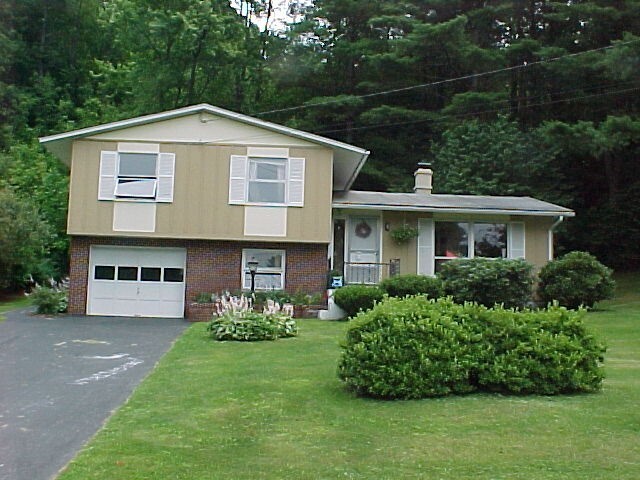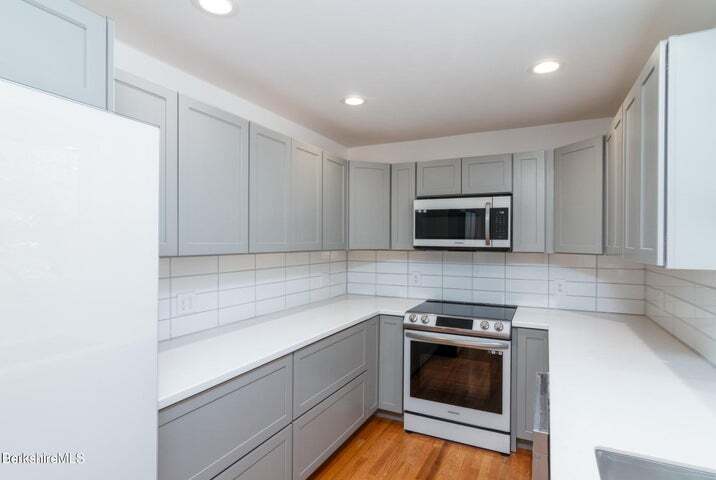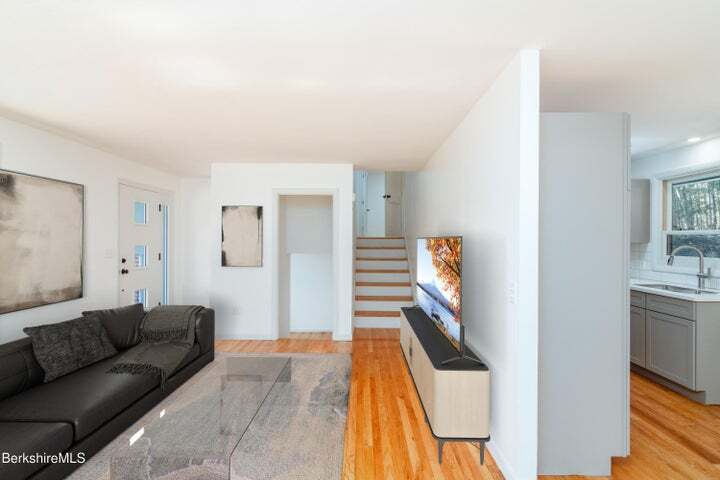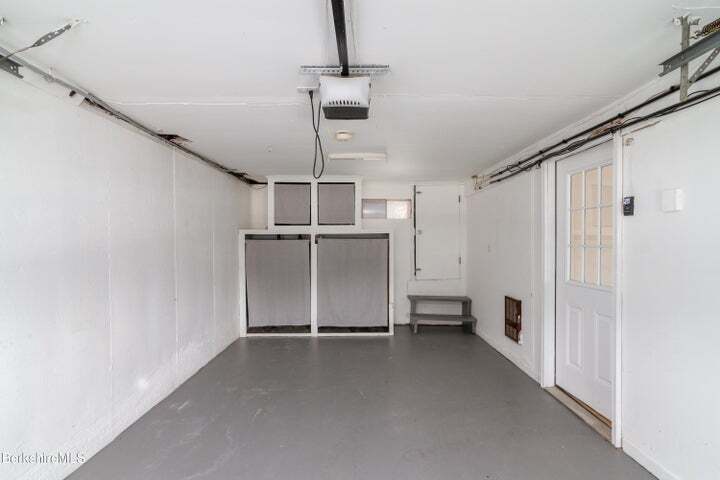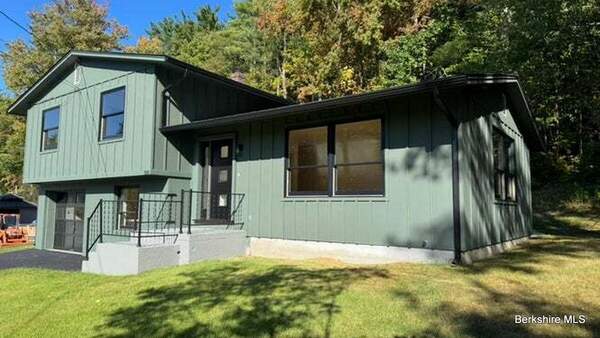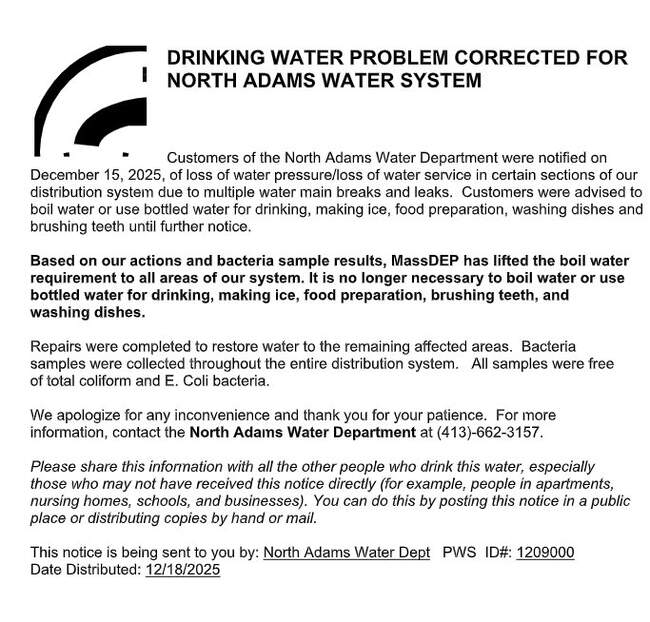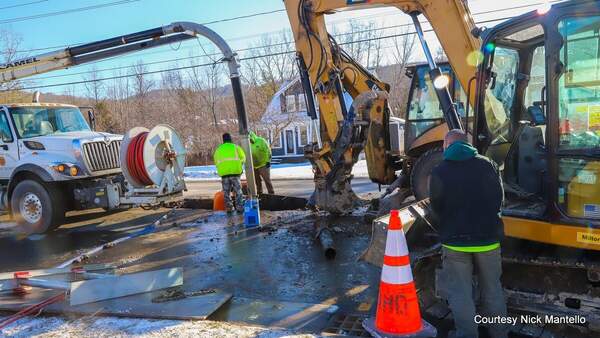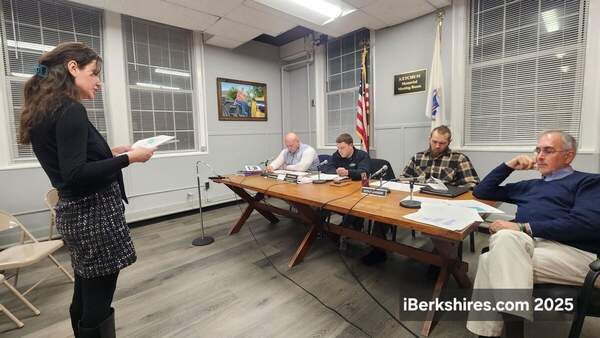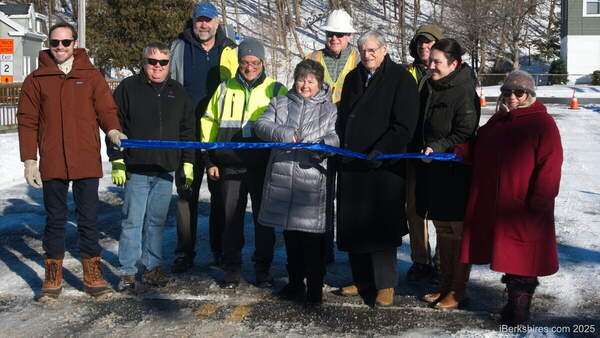Earth Removal Permit Approved for Clarksburg Golf Course
 James Basiliere, center, explains the plans for his 18-hole golf course at Wednesday's permit hearing. James Basiliere, center, explains the plans for his 18-hole golf course at Wednesday's permit hearing. |
CLARKSBURG, Mass. — The Selectmen on Wednesday night approved a two-year permit — with a long list of conditions — for the removal of thousands of truckloads of dirt from the North Adams Country Club.
James Basiliere purchased the club in 2011 with the intention of expanding the nine-hole course into 18 holes and to rebuild the clubhouse over the next several years.
He expects to take some 450,000 cubic yards of material out of the course to grade it properly, including from its current higher elevations along River Road to its expansion south toward the Cross Road bridge.
The permit will allow some 150,000 cubic feet a year for the first two years, a number that Basiliere thought "comfortable" for the surrounding community during Phase 1 of the project.
More than 30 abuttors and interested community members attended the public hearing at the Senior Center, peppering Basiliere and his designer with questions on the removal of earth and concerns over the project being left unfinished. Several people questioned why material was going out but nothing coming in.
"If you walked away from the project I don't want a gravel bank in my front yard or back yard forever," said one abuttor. "I want to make sure there's topsoil ... to cover what's left on that property."
Basiliere, a golf course shaper, explained that there was more than enough material to complete the course — so much of it that a lot had to be taken out.
"I don't need material to build an 18-hole golf course, I need to take material out to build a 18-hole golf course," he said. While some mixed soils may have to be brought in toward the end, he sounded confident that what was there, including the top soil, would be sufficient to create a 6 to 8 inch base of sand/top soil mix over the course
"There's sand, I can use it for bunker sand to cut with topsoil," he said, explaining material reuse. "I can use that for the fairways, I can use it for the greens mix."
Gravel, sand and clay will be removed at a rate of 10,000 truckloads a year, or seven to six an hour. Basiliere agreed to signage warning of trucks entering and exiting, work-hour limits and cleanup of any spilled earth on the roadways.
"At the end of two years, I should be able to complete this portion of the project and come back and see where we need to be," said Basiliere.
"We could ask to haul more out but I'd rather not ... 150,000 is a comfortable number."
A number of residents were concerned about the effect on the roadway and bridge at Red Mills, both of which are maintained by the state. Town officials said the state was not really involved and the roads were public ways.
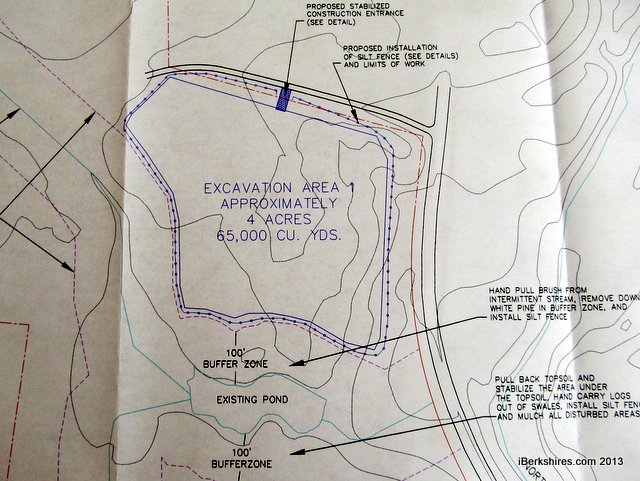 |
Basiliere assured those attending that he had enough land right now to complete the 18-hoes project but was hoping to purchase more land to the north and east to make the course longer. The second phase will be southward onto property that was formerly the Krutiak yard.
Basiliere closed on the property at 34 Cross Road on Wednesday for $275,000. Development of that area will include bank restoration along the river that was seriously eroded by Tropical Storm Irene. He's also eyeing a long-vacant house near the bridge, not for course expansion, but because it looks bad.
The clubhouse will be renovated and reconstructed in essentially the same spot but the parking lot and entrance will be reconfigured for safety reasons. "It's wildly unsafe," said Basiliere.
Those elements may go forward during Phase 1 but will require separate permits.
Planning Board Chairman David Sherman raised the issue several times during the meeting that the golf course plans did not include final grading data. Basiliere and his engineer John Durpas said they did not want to rely on the geological survey and would have their own elevations within three weeks.
The permit was approved with 19 conditions, pending approval of the elevations, including limiting earth removal between 8 and 4:30 on weekdays, no holidays; the signage and cleanup; the posting of the $100,000 bond; detailed plans for restoration should the project fail; no use of explosives or rock crushers and screening done at least 1,000 feet from property lines; that wetlands issues be addressed with the appropriate agencies and that the work be done no more than 5 acres at a time.
Tags: excavation, golf course, permitting,

